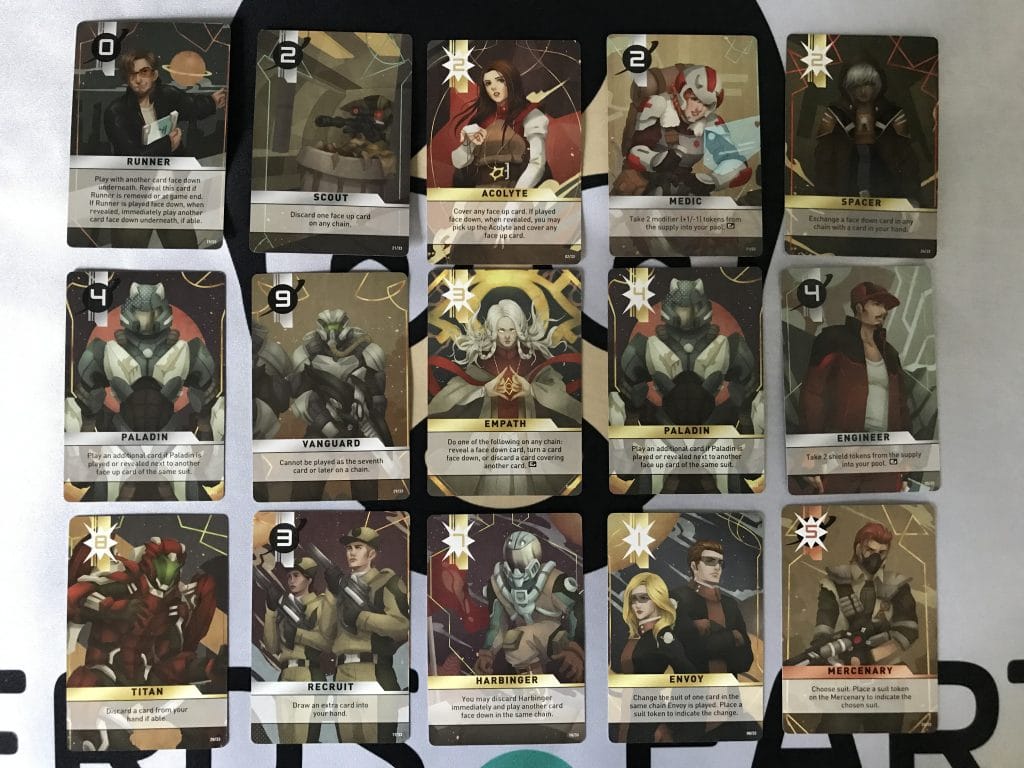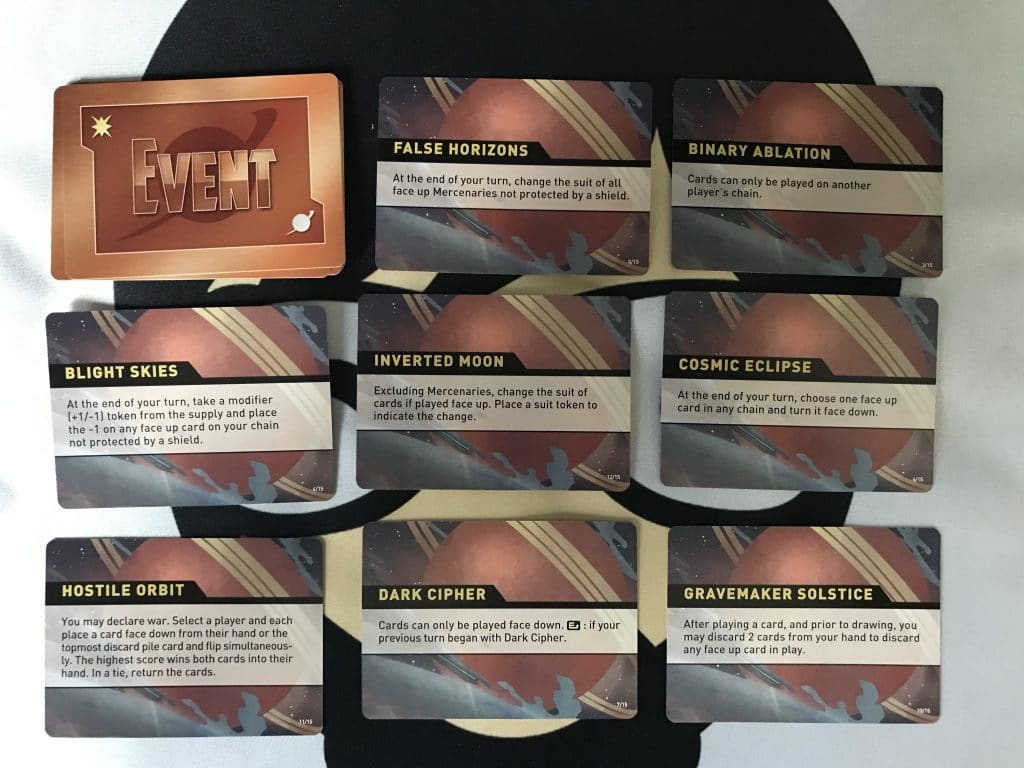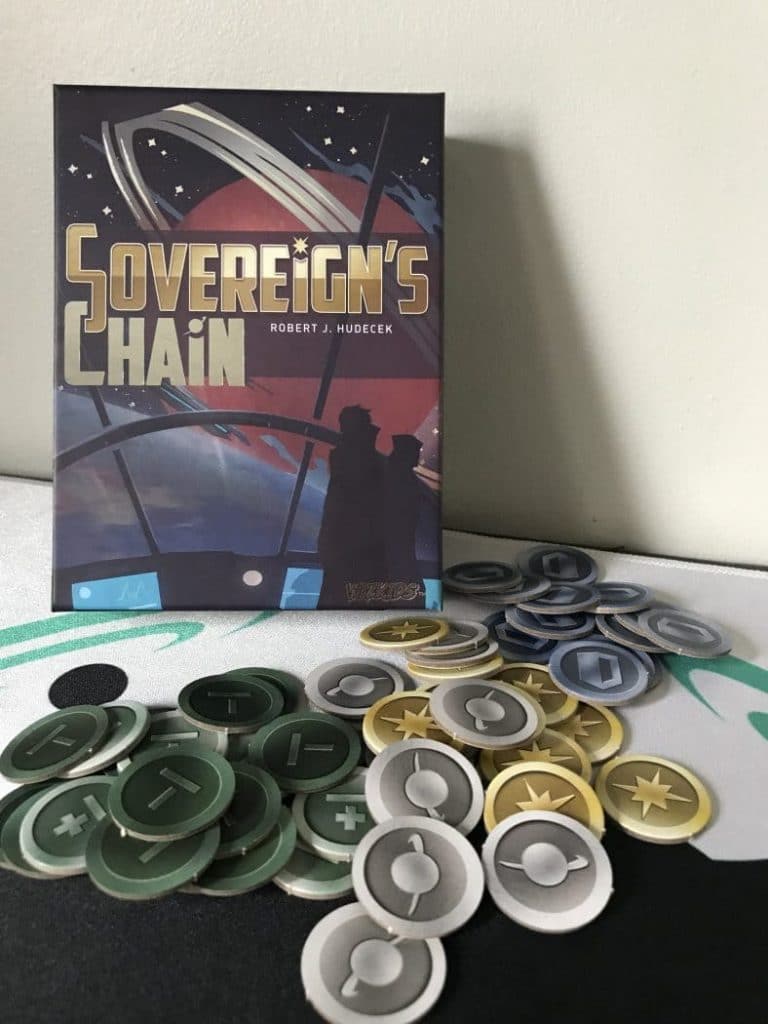I’ll be first to admit that I’ve only seen My Fair Lady once. Growing up, my sister went through a massive Audrey Hepburn phase, which coincidentally, meant that I did too. Therefore, I sincerely apologize if my pun attempt in the title fell completely flat; Mrs. Hepburn deserves better.
But, alas, this isn’t an article regaling the discography of the star-studded Audrey Hepburn. It does, however, have quite a bit to do with stars! I recently had the chance to play Sovereign’s Chain, one of the newest releases from WizKids.
Designed by Robert J. Hudecek, this set-collection card game uses more brain power than you’d initially think. As if analyzing your own cards wasn’t enough, you’ll have to pay attention to the other players and react to their strategies as well.
Grab some breakfast (maybe at Tiffany’s?) and enjoy this deep-dive into the fast-paced card game, Sovereign’s Chain.
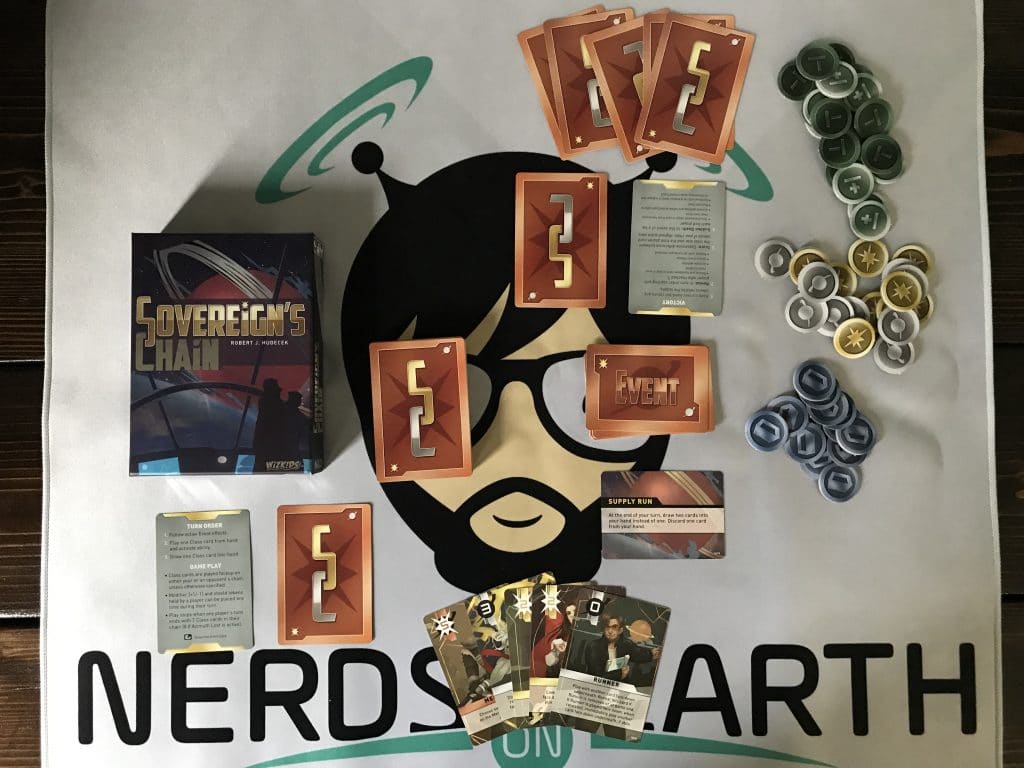
Sovereign’s Chain: Planetary Alignment
The premise of Sovereign’s Chain is that it’s a game played among mercenaries, merchants, and anyone else looking to pass the time with a game of skill and luck. But it’s not a game played on Earth; it’s played far in the future when there are seven star systems all interwoven in a diplomatic tapestry of life.
Players compete to create a set of seven cards, which make up their chain. I guess this makes all of us de facto sovereigns? Once someone’s tableau has seven cards, the game ends and scores are tallied. Whoever has the highest difference between the sum of the two suits of cards in their tableau is the winner.
That was a mouthful, but I promise that it isn’t as complicated as I made it seem.
You see, each card belongs to one of the two suits: stars or planets. As the game progresses, your tableau is going to have a blend of these two suits, and basically your goal is to focus on a single suit.
The catch is that you can play cards in your chain or in your opponents’ chains. And that, my friends, is where the real beauty of the game comes in; Nobody’s going to let you just waltz down easy street accumulating massive numbers of star suit cards. You need to fight tooth and claw while keeping your head on a swivel!
Staking Our C.L.A.I.M on Sovereign’s Chain
 Components
Components
I’ve been reviewing a lot of card games recently, which doesn’t usually give me much to drool over in terms of components. The nice thing about card games, however, is that they’re über-portable and can usually be played in smaller places.
Sovereign’s Chain comes complete with two serviceable decks of cards. The first is your main stack of suited cards that you’ll be using to craft your chains. A second, thinner stack is for the Event cards. These cards alter the game state and usually trigger an effect at the end of each turn.
Additionally, the game includes three different types of thick cardboard tokens:
- Suit: These double-sided tokens denote suits, since certain cards don’t have an initially-defined suit. If a suit of a card changes due to another card, these are used for those as well.
- Modifier: If a card changes the face-value of another card, these tokens can indicate a +1 or a -1 to whatever card they’re placed on.
- Shield: These helpful little tokens will prevent cards from being targeted by other cards and effects. It’s Hexproof!
My biggest qualm is that I wish the storage was a bit better. As it stands, you have the two decks of cards sharing a partitioned space with a pile of tokens. Using a couple small bags will do wonders to keep things organized.
Can I just add that I LOVE punching out cardboard circles? Therapeutic doesn’t even begin to describe the serenity it grants.
 Luck
Luck
Luck plays more of a role in the solo variant, although it’s still definitely present in the main game. You’re drawing a bunch of cards – what else would you expect?
For those of you that don’t care much for luck in your games, don’t let that drive you away. The fact of the matter is that there are only two suits in the game, so you’re never truly locked into a strategy. Especially since your opponents might start playing high-value cards of an opposite suit on your chain, which means you can just switch over to that suit. It nullifies their entire strategy!
Sure, there might be instances where you aren’t drawing anything you need, but at some point your opponents will experience the same woes. It’s just a part of the game, and it works well.
 Aesthetics
Aesthetics
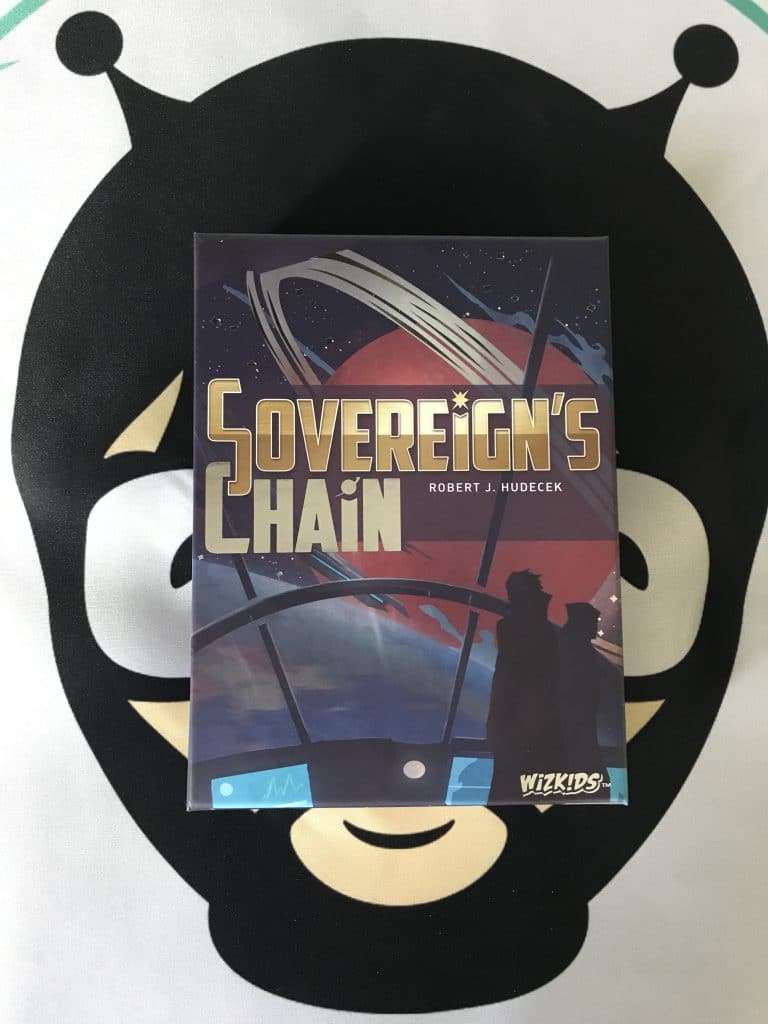
Box art needs to grab your attention and pull you in. Books don’t necessarily need that, but it certainly helps to have a catchy cover. When it comes to Sovereign’s Chain, you’re talking about a game with a fairly-loose theme, so how is the presentation?
For a “generic” space game, WizKids nailed it. The box is thick and has an appealing amount of metallic texture accenting the planetary rings and stars. Who are those two figures in the shadows and what kind of shadowy dealings are being dealt?
The card art is striking, pronounced, and really helps give a feel for what each of the characters is capable of. Card layout is especially important in games using that component as a flagship, and these ones are cohesive and intuitive.
Oh, and the entwined ‘S’ and ‘C’ in the logo is genius.
 Interest
Interest
People who enjoy trying new card games are prime targets to try out Sovereign’s Chain. And, quite frankly, anybody who’s familiar with basic card games is already decently equipped to understand the base mechanics of the game.
If you like constantly changing strategies, and paying attention to what other players are doing, this is also going to be right up your alley. Luckily, the suits are going to be easily visible unless you’re playing at King Arthur’s table.
Hidden information is another aspect of the game that I haven’t even touched on. Everybody’s first card goes face-down. If it’s ever brought face-up (which it will by the end-game), its effect is triggered immediately. Therefore, you have pieces of each chain that are completely unknown. You’ll need to weigh that information when determining which cards you play on your opponents’ chains.
In addition, the Event cards help create a unique game each time you crack open the box. These alter the game in a major way, whether they result in cards being flipped over or suits swapping. They turn things completely upside down, and it’s a riot.
 Mood
Mood
Pure chaos.
I should just leave this section with that, but I wouldn’t be doing my due diligence if I didn’t add a couple more points.
Because players are playing cards all over the table, there is a certain level of tension that naturally develops when playing Sovereign’s Chain. People are going to get worked up!
The tension continues to increase as the game nears its end. Everybody is going to know when someone is close to ending the game, but because of the hidden information they might have reason to believe they don’t want to end the game yet!
Playing with the maximum of four people creates the most chaos – cards swapping chains, moving from one chain to another person’s hand, etc. It’s a wonderfully simple but complex decision-making game.
Sovereign’s Chain: Seeing Stars
Sovereign’s Chain pleasantly surprised me. The biggest hurdle for new card-based games is to come up with something unique among a sea of competition. I don’t have any numbers in front of me, but I’d bet my last biscuit that card games are the most common type of game launched. I’d even stand by that claim if you removed all “standard” card games like poker, war, and the like.
I wonder if Audrey Hepburn was a fan of card games. If she wasn’t, that would truly be a Roman holiday.
[Disclosure: Nerds on Earth was provided a copy of Sovereign’s Chain in exchange for an honest review.]


